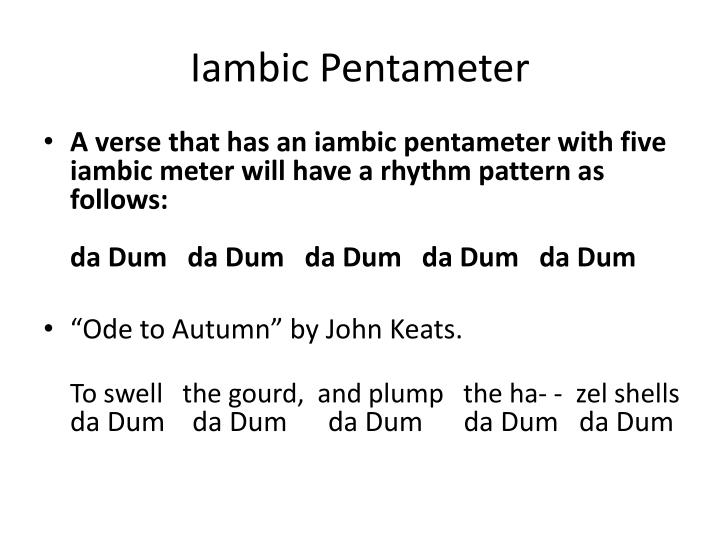
The iamb is able to convey the polyphony of feelings, both the dialogue and the monologue, a lonely voice and the crowd’s roar alike. The history of poetry proves that iambic pentameter is in tune with the natural rhythm of the English language. What is Iambic Pentameter? The King of English Poetry In folklore, the word “ἴαμβος” was associated with the comic nature of the poems composed in it.

The term ” iambic ” – “ἴαμβος” – goes back to the musical instrument “ἰαμβύκη”, to the accompaniment of which iambics were originally performed. In his “ Poetics“, Aristotle himself notes how the iambic foot is similar to the rhythm of colloquial speech (which is the reason why the iambus remains the most popular poetic meter). They were often obscene and cynical, as Iambe’s standards demanded. In the cult of Demeter, it was customary to drench the participants of folk festivals in rude ridicule and sarcastic jokes. Once she learned about Persephone’s death, the only one who could brighten up the goddess’s mood with her raunchy jokes was the female servant Iambe whose name evolved into the name of the meter. According to the myth, searching for her kidnapped daughter Persephone, the goddess left Olympus and settled in the palace of the Eleusinian king Keleus under the disguise of an old mortal woman. Iamb’s roots are found in ritual folklore and cult songs of the ancient Greeks who glorified Demeter, the patroness of agriculture. 689–640 BC), yet he was not the inventor of the meter. The iambic foot officially dates back to the ancient Greek poet Archilochus (c. 3.5 Iambic Hexameter The Origins and History of the Iambic Meter


 0 kommentar(er)
0 kommentar(er)
